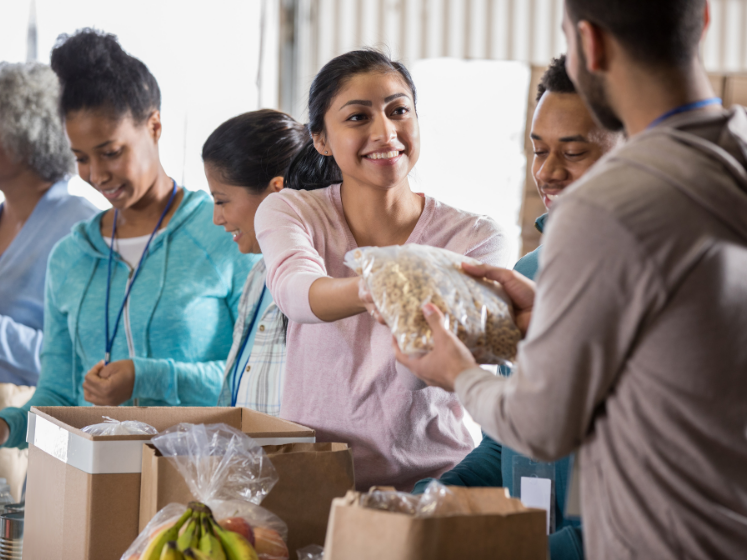About the company
Registered in 2004, Hand in Hand India began its operations on a humble scale with a vision to eradicate child labour in Kancheepuram, a district in Tamil Nadu in South India known for its 500-year-old silk weaving industry. Children here were being exploited as a cheap source of labour. Many children were bonded to work for life, when their poor parents could not afford to pay back loans taken from employers. Dr. Kalpana Sankar, Hand in Hand India's founder, thus evolved the first 'Child Labour Elimination programme' to set these children free from child labour. Over the years, the organisation has expanded geographically - from one small district to 16 large States of India and seven countries globally - and thematically - from preventing child labour to addressing root causes of poverty through its five Pillar Programme. These include interventions on financial inclusion, skill development, climate change, water, health, women empowerment, environment, nutrition, sanitation, job creation, solid waste management, among others. Hand in Hand's unique job creation model has been adapted and replicated in seven different countries across three continents including Brazil, Afghanistan and South Africa. The list of prizes awarded to Hand in Hand is impressive and goes from the 'Nari Shakti Puraskar' ('Woman Power Award') from the Government of India to the United Nations' Princess Sabeeka Bint Ibrahim AI-Khalifa's Global Award for Women Empowerment. Hand in Hand India has been instrumental in the creation of six million jobs for women across India and is looking to reach its goal of ten million jobs by 2025.
About the project:
Hand in Hand India's model has been, over the last two decades, focused on interventions and projects that have high impact outcomes that benefit communities at large. The organisation has a very corporate structure with a division for partnerships, fundraising, finance, communications, monitoring and evaluation, aside from the project implementation teams. With these able teams, Hand in Hand India has been able to garner donor funding both through international organisations, foundations and local Indian corproate social responsibility (CSR). The organisation also has a "work will speak for itself approach" subsquently limiting it's media presence. This has restricted Hand In Hand India from being seen as a globally reputable organisation known for high quality work. Hand in Hand India wanted to improve it's social media presence and leverage the reach of these platforms to share their stories and highly impactful work to wider, global audience.
Project Objectives:
The project involved understanding the not-for-profit market in India and globally, specifically in relation to improving Hand In Hand India's digital and social media presence. A detailed report on the approach would be needed in order to reach the following outcomes:
- Increase the followers of our social media pages
- Detailed note on not for profit story telling
- Funding through individual and recurring donation
 Hand In Hand India's statement
Hand In Hand India's statement
What do you think the students brought to the business? Were their ideas different from what you could have achieved if you have conducted this project in-house?
The students from the MALP project brought a fresh perspective to our social and digital strategy. We have a small team and having new insights, especially in line with the fast-changing social media world, was eye opening. The team presented a detailed overview of the not-for-profit sector in India and suggested what we can do better. They also re-formatted all our data into a digestible format that we can now effectively study and implement. The team were very professional and have now set us with a benchmark for how we can improve our social media presence and messaging.
How do you think the Business Projects have helped your business?
The business project has been important in showing us where we stand and how we can improve our digital strategy. Five years ago our website and social media messaging was interesting and relevant but we now that it needs to be adjusted in line with the current trends. Furthermore, the analysis on website donations (the sweet spot where we understand how many individuals are willing to donate alongside recurring donations), were all very interesting for us to study and subsquently implement – this transcends beyond our marketing and fundraising strategy, which will ultimately help Hand in Hand India’s visibility and growth.
How would you use the outcomes in your business going forward?
We are studying the results with the senior Hand in Hand India team and discussing what we can implement on a short term and longer term basis.You will see the changes on our website and social handles soon, so stay tuned!

Student Statement
What was your role in the business project? What were the other roles in your team and how did you work together?
To maximise our collaboration and ensure the best possible outcome, all our team members initially engaged in brainstorming sessions to outline the essential research and analysis required to address the company’s specific challenge. Once we had broken down the tasks into manageable components with a designated timeline, each member took part in responsibilities aligned with their interests, experiences, and expertise.
I took the lead in conducting primary research, which encompassed designing a survey, collecting data, and analysing results. The objective was to uncover insights related to targeted concepts, optimal pricing points, and advanced user experiences, all aimed at increasing engagement and conversion. Other team members were dedicated to secondary research involving SWOT analysis, web analytics, competitor evaluation, and UX/UI benchmarks. These contributions were seamlessly integrated into the final deliverables, forming a cohesive strategy and actionable tactics that the company can readily apply in real-world business situations.
How did you benefit from working with a Sponsor?
Our sponsor aided our team in understanding the challenges the company has been facing by providing guidance on their main competitors and facilitating the acquisition of first-party data to enrich our research. Extracting insights from their ongoing marketing campaigns in their owned digital media space allowed us to put forth actionable and impactful ideas for improving their website and social media channels. Furthermore, leveraging the company’s resources to gather more data through primary research made a substantial contribution to conducting high-quality research across diverse countries.
What key skills or knowledge did you learn from your experience, and how will you apply them in the real world?
The project enabled me to grasp the application of a core marketing framework and delve into insights about psychological consumer behaviours gained from the course. Working alongside team members also broadened my understanding of branding strategies and tactics for enhancing user experiences. This hands-on experience will seamlessly integrate into my approach when aiming to capture consumers’ attention and strategically position products with a competitive edge in the market.